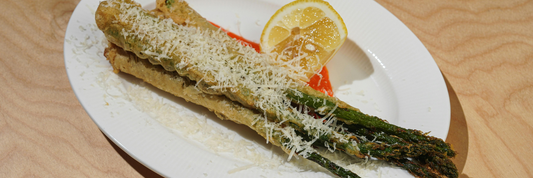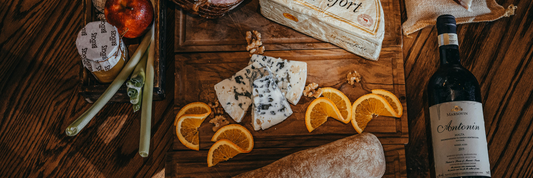Packing sandwiches the right way keeps them fresh, crisp, and delicious — whether for school, work, or travel. The secret lies in choosing the right wrapping materials, layering ingredients properly, and storing them at safe temperatures. This article will show you exactly how to pack sandwiches so they stay flavorful, well-structured, and safe to eat wherever you go. You’ll learn about wrapping methods, storage tools, and tips to prevent soggy bread and maintain perfect texture until mealtime.
- Sandwich Calories: How Many Are in Your Favorite Sandwich?
- Ultimate List of Sandwiches: 50+ Must-Try Types from Around the World
Materials & Tools for Packing Sandwiches
Wrapping Supplies (Parchment Paper, Waxed Paper, Foil, Plastic Wrap)
The right wrapping material keeps sandwiches fresh and easy to handle.
-
Parchment paper is ideal for most sandwiches. It allows slight air circulation, preventing sogginess while still holding moisture. It’s also easy to unwrap and great for presentation.
-
Waxed paper offers a light moisture barrier and works well for short-term storage or packed lunches eaten within a few hours.
-
Aluminum foil is excellent for hot sandwiches like paninis or grilled cheese. It retains heat but should be avoided for long-term storage in the fridge, as it can trap condensation.
-
Plastic wrap provides an airtight seal and prevents leaks, making it useful for moist fillings or overnight storage. However, it may cause condensation if the sandwich is still warm when wrapped.
For best results, allow the sandwich to cool completely before wrapping, regardless of material.
Get a FREE quote + $300 OFF your first custom sandwich wrap order
Know someone who needs a trusted supplier? Share this deal with them!
Top 6 Sandwich Wrap Paper Options to Keep Your Sandwiches Fresh and Tidy

Containers and Lunchboxes
Reusable containers and bento-style lunchboxes are convenient, durable, and environmentally friendly.
-
Use hard-shell containers to protect soft sandwiches from being squashed during transport.
-
Sectioned lunchboxes allow separation of sides (fruits, snacks) and prevent sauces or fillings from leaking.
-
For travel or work, insulated lunch bags or boxes paired with ice packs help maintain food safety and freshness.
Select a container that matches the sandwich shape — rectangular for sliced bread, square for wraps or rolls — to reduce movement during transport.

Techniques for How to Pack Sandwiches for Freshness
Avoiding Sogginess: How to Pack Sandwiches So They Stay Crisp
To keep bread from absorbing moisture:
-
Use dry lettuce, cheese, or meat slices as a barrier between bread and moist ingredients.
-
Avoid adding tomatoes or sauces until just before eating.
-
Store condiments separately when possible, especially for long travel.
-
Choose dense bread types (like sourdough or multigrain) that resist moisture better than soft white bread.
Sealing the Bread: Using Butter or Spread as Moisture Barrier
Lightly spreading butter, cream cheese, or mayonnaise on the inner sides of the bread helps prevent sogginess. These create a thin moisture barrier that slows absorption from wet fillings. This technique works especially well for vegetable or deli sandwiches.
Layer Order and Wrapping Method: How to Pack Sandwiches with Wet Ingredients Separated
Proper layering helps maintain structure and freshness:
-
Start with a moisture-resistant base like cheese or lettuce against the bread.
-
Add meats, then moist ingredients like tomatoes or cucumbers toward the center.
-
Wrap tightly using parchment paper or foil to hold layers together without crushing.
For longer trips, pack wet ingredients separately in small containers and assemble before eating.
Make-Ahead Sandwich Packing: Preparing the Night Before
Many sandwiches can be made ahead if wrapped and stored correctly.
-
Refrigerate immediately after wrapping in parchment or plastic wrap.
-
Avoid lettuce, tomato, or sauces until serving time to prevent sogginess.
-
Bread types like ciabatta, rolls, or whole-grain loaves hold up best overnight.
Remove from the fridge 10–15 minutes before eating to allow bread to soften slightly.
Travel and Outdoor Packing: How to Pack Sandwiches for Trips, Picnics, School Lunches
For outdoor or travel use:
-
Pre-cool sandwiches in the fridge before packing to keep them fresh longer.
-
Use insulated lunch bags with ice packs to maintain temperature during transport.
-
For road trips, store in a cooler box away from direct sunlight.
-
Wrap each sandwich individually for easy distribution and freshness control.
Pack napkins or paper towels to absorb condensation and maintain texture.
Storage & Transport: How to Pack Sandwiches for Different Scenarios
School Lunch-Box & Work Lunch: How to Pack Sandwiches for Lunchboxes
-
Wrap sandwiches tightly in waxed or parchment paper and place them inside a hard lunchbox.
-
Include ice packs to keep perishable fillings safe.
-
Keep sauces or spreads in separate containers for self-assembly at lunchtime.
Picnic, Road-Trip or Outdoor Event: How to Pack Sandwiches for Travel
-
Use sturdy bread and minimal sauces for travel sandwiches.
-
Stack sandwiches vertically in a container lined with parchment paper.
-
Keep in a cooler or insulated tote and serve within 2–4 hours for best texture.

Refrigerated vs Non-Refrigerated: How to Pack Sandwiches When Fridge Access Is Limited
-
If refrigeration isn’t available, avoid fillings like mayonnaise, meat, or cheese.
-
Stick to non-perishable options: peanut butter, jelly, or hard cheeses.
-
When refrigeration is available, use airtight containers or plastic wrap to prevent drying out.
Freezer Packing: How to Pack Sandwiches to Freeze and Thaw Later
Sandwiches made with hardy bread and dry fillings freeze best.
-
Wrap each sandwich tightly in plastic wrap, then foil, and store in a freezer bag.
-
Label with the date; frozen sandwiches keep well for up to 1 month.
-
Thaw overnight in the refrigerator before eating or reheating.
Time and Temperature Guidelines: How to Pack Sandwiches Safely for Hours Out of Fridge
-
Keep sandwiches below 4°C (40°F) until eaten.
-
With an ice pack, sandwiches are safe for 4–5 hours at room temperature.
-
Without cooling, consume within 2 hours.
Always discard sandwiches that have sat in high heat or sun exposure.
Presentation & Portioning: How to Pack Sandwiches That Look Good
Portion Size and Cutting: Halves, Quarters, Stacked Layers
Cutting sandwiches neatly enhances presentation and makes them easier to eat.
-
For lunchboxes, diagonal halves fit neatly and look appealing.
-
For catering or events, quarters or mini-triangles work best for portion control.
-
Stack or stagger sandwiches with parchment paper between layers to prevent sticking.
Wrapper Folds, Clear Containers: How to Pack Sandwiches So They Open Cleanly
Fold parchment or waxed paper snugly around the sandwich, leaving easy corners to unfold.
-
Clear containers allow visibility and reduce the need to unwrap before serving.
-
Avoid over-tight wrapping, which can flatten delicate ingredients.
Labeling and Organized Layouts: How to Pack Sandwiches for Events, Catering, Gifting
When preparing multiple sandwiches:
-
Use labels or color-coded wraps to identify different fillings.
-
Arrange sandwiches in rows within boxes or trays, separating layers with parchment paper.
-
For gifting or catering, wrap each sandwich attractively with twine or stickers for a professional look.
Eco-Friendly Packing: How to Pack Sandwiches Using Sustainable Materials
For environmentally conscious packing:
-
Replace plastic wrap with compostable parchment paper or beeswax wraps.
-
Use reusable silicone bags, bamboo lunchboxes, or stainless-steel containers.
-
Avoid single-use plastic; opt for recyclable or biodegradable alternatives.
Sustainable materials not only reduce waste but also keep sandwiches fresh and visually appealing.
FAQs About How to Pack Sandwiches
What is the best way to wrap a sandwich for later?
Use parchment or waxed paper for short-term storage. For travel or overnight, use plastic wrap or airtight containers to keep moisture in and air out.
Can you freeze packed sandwiches and how do you thaw them?
Yes — sandwiches with dry fillings (like ham, cheese, or peanut butter) can be frozen for up to 1 month. Thaw overnight in the fridge before eating.
Should you pack bread, fillings, or sauces separately?
Yes — if possible. Packing sauces or juicy fillings separately and assembling later helps maintain texture and freshness.
Conclusion
Mastering how to pack sandwiches ensures every bite tastes as good as when it was first made. By using the right materials, layering wisely, and considering temperature and timing, you can keep your sandwiches fresh and appealing for hours. Whether you’re preparing lunchboxes, picnic baskets, or make-ahead meals, a few thoughtful packing techniques make all the difference. With these methods, your sandwiches will stay crisp, safe, and ready to enjoy anytime, anywhere.




